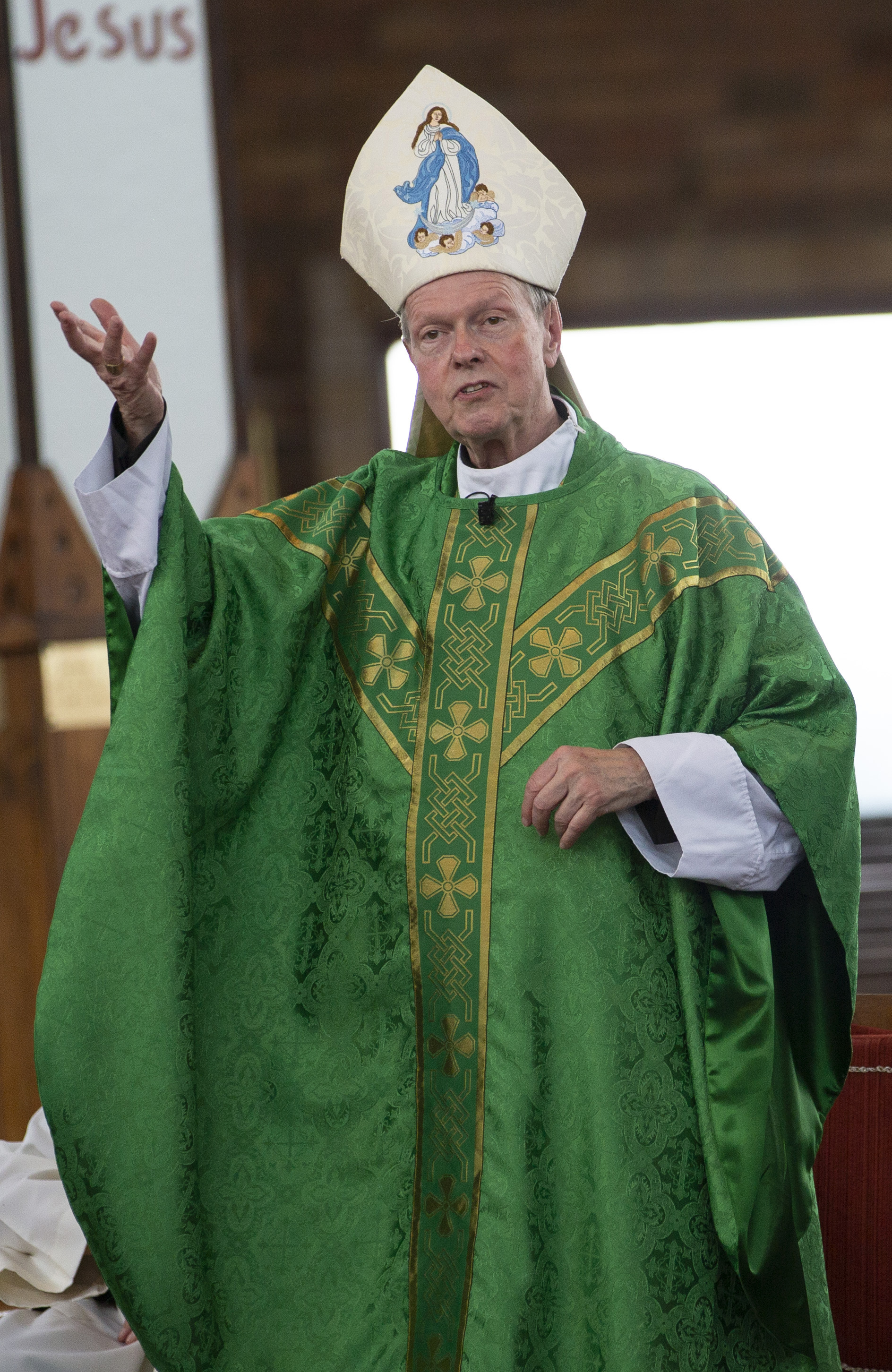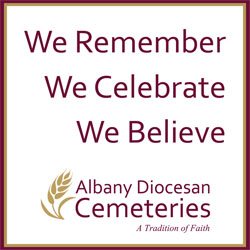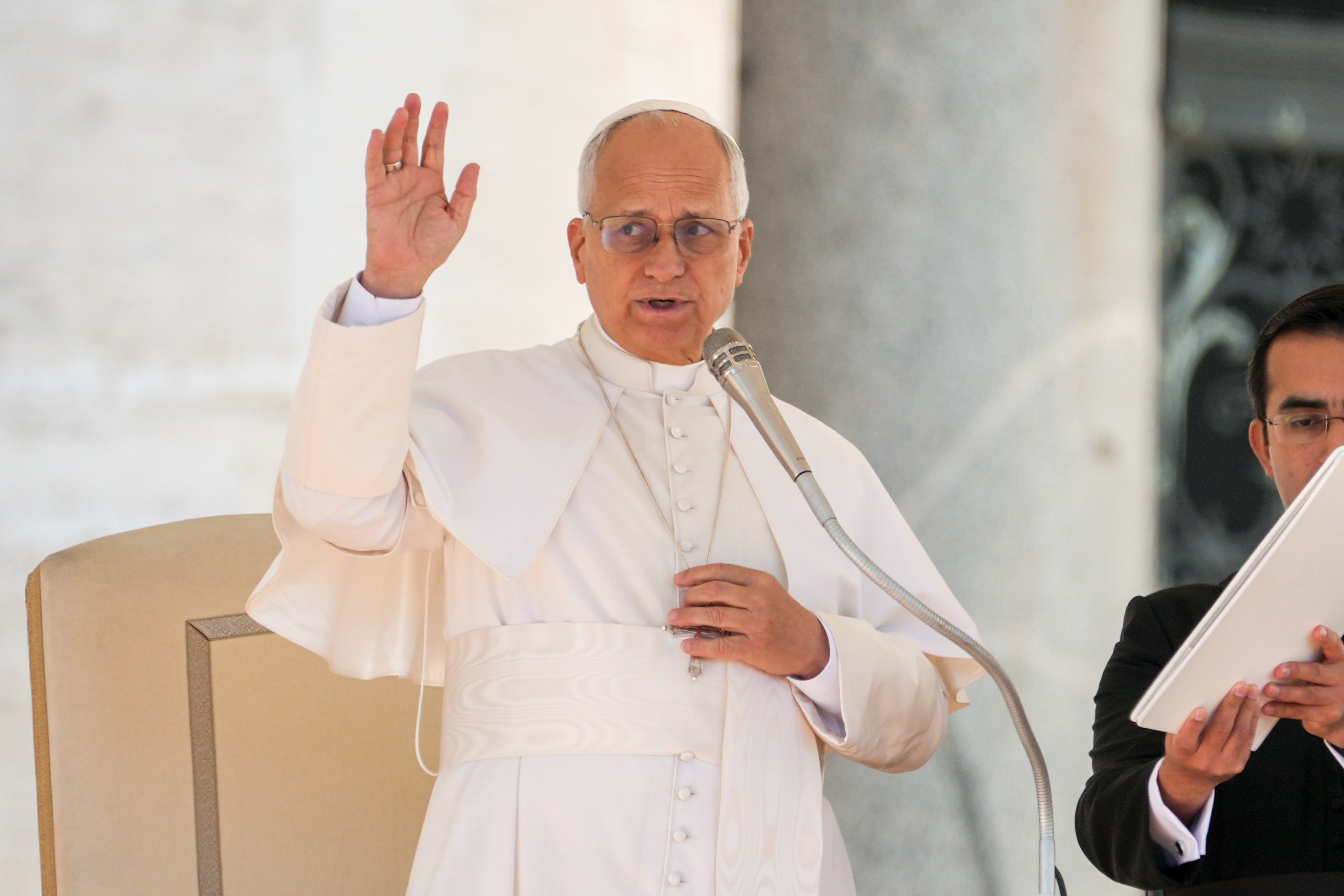April 6, 2018 at 1:53 p.m.
REFLECTION ON HISTORY
Father MacKenna, an 18th-century priest
A statute enacted by New York Governor Richard Bellamont around the year 1700 forbade Catholic priests from entering the Province of New York. Jesuits, priests and popish missionaries were outlawed, and were priced at $113 apiece for the Indians who would turn them in.
However, William Johnson, who settled in this area in 1737, wielded much influence with the Indians and the Crown. Johnson was rewarded for his valor in the French and Indian War with knighthood and land, so it was not so surprising that a group of Catholics and their priest would feel safe under his protection.
Eager to colonize and more solidly claim his land holdings, Sir William arranged for 300 Scotch and Irish Catholics, along with their pastor, Rev. John MacKenna, to settle on and around Johnstown.
Under the terms of agreement, the new settlers, as tenants, acquired a tract of land averaging from 50 to 100 acres - generally, with no more than an acre or two cleared of forest - along with household goods, farm implements and cattle. Some of the wealthier settlers purchased outright as many as 500 acres.
The mixed group of Irish and Scotch had been eager to escape the Protestant domination of their homelands. In Scotland, Lord Boisdale ordered the mass eviction of his Catholic tenants in 1770 unless they followed him into the Presbyterian fold; emigration seemed the only solution for Catholics.
With only one Gaelic-speaking priest in America, it was a concern for the Church in Ireland to find a priest to cross the ocean with the large numbers of Highland Catholics. Father MacKenna, "a man of gigantic stature and prodigious strength," suited to be a pioneer, was enlisted.
The Scottish emigration to America - to Prince Edward Island, Nova Scotia, the Carolinas and New York - in the 1770s was running at a high pace.
Father MacKenna's native tongue was Gaelic. He was born in County Meath in 1743, the son of farmer Michael MacKenna (William Johnson was also from County Meath), educated for the Scottish mission and ordained there in 1768. His concern was for the souls of the Scottish Catholics. This explains the mixed Irish-Scottish congregation that sailed on a Navy frigate in 1773 for the Mohawk Valley, for freedom of religion and opportunity.
They were not long on their homesteads when trouble began to brew among their neighbors, who were fomenting against British rule. Father MacKenna's flock took allegiance seriously; an oath to remain loyal to Great Britain was part of their emigration papers. Furthermore, they had not left their homeland but two years, and many of their relatives had ties to the British military. Joining the rabble-rousing farmers was abhorrent to them.
The rabble-rousers were mostly of German descent and had come to despise the Catholics in the old country. When they heard that Catholics were hired to protect the manse at Johnstown, they were furious. They took up their muskets and arrested the county sheriff at Johnstown, where the sentinels had been posted.
The situation on the Mohawk steadily worsened. In December 1775, General Philip Schuyler was ordered by Congress to disarm the loyalists in Johnstown. On Jan. 13, 1776, Schuyler halted his troops 16 miles west of Schenectady and invited Sir John Johnson, William's son, to confer with him.
Johnson was forced to sign articles of capitulation as a representative of the Scottish settlers. Six of the most prominent members of Father MacKenna's parish were sent to prison in Lancaster, Pa., without any provision being made for their families. Three escaped a year later, but the others were not released until 1779.
Under dire hardship, the flock escaped to Canada and took up arms against the patriots. Whether he was regularly commissioned or not, Father MacKenna was unquestionably the most active chaplain on the Canadian station: "He celebrated Mass for his old parishioners become soldiers and their families, now divided between Allan MacLeane's camp and Sir John Johnson's, and for the Hessian troops scattered in camps along the St. Lawrence Rivers, 'going from company to company preaching and confessing in German, which he spoke fluently.'"
They participated in the battles of Fort Stanwix and Oriskany. After the latter, Father MacKenna wrote: "Reverend and dear Father, a short time ago we reached Fort Stanwix, which will soon, with God's help, be in our hands, as it is completely surrounded by the King's soldiers. On the seventh of this month, Sir John Johnson with 80 men of his own regiment and 500 Indians encountered a thousand Yankees about three leagues from Fort Stanwix. Sir John was victorious. Two hundred Yankees were killed, among them General Herkimer and many of his officers. Sir John lost only four officers, six soldiers and 20 Indians, 30 killed in all. Colonel St. Leger remains in command before Fort Stanwix."
Final victory went to the Americans when a panic started among St. Leger's Indians, who made up all but 250 of his little army; in the frantic retreat, baggage was looted by Mohawk and patriot alike. Father MacKenna lost his vestments, missal and much personal property in the confusion.
After Burgoyne's surrender, the King's Royal Regiment of New York and the Royal Highland Emigrants were both assigned to guard the gates of Canada. Father MacKenna marched with them in minor border forays of that year.
Father visited each encampment, serving the unique ethnic recruitment, as he spoke seven languages. His health was failing rapidly and, in 1778, he asked to be relieved of his duties. He returned to Ireland to regain his health, but died in his 46th year.[[In-content Ad]]
SOCIAL MEDIA
OSV NEWS
- Pope offers prayers for the Philippines and for peacemakers
- Dig deep and work patiently to keep church on solid foundation, pope says
- Portland archbishop on ICE: Human dignity comes from God, not government
- Christian hope shows the earth can resemble heaven, pope says
- Washington Roundup: Election shifts; Venezuela vote; transgender passports, and more
- Novel highlights power of art and music as a salve to troubled humanity
- Supreme Court sides with Trump administration to temporarily block full funding for SNAP
- Former diocesan fundraising director indicted on wire fraud for alleged 6-figure theft
- Love is key to church’s mental health ministry, says bishop who lost family to suicide
- Caring for creation is part of peacemaking, pope tells COP30







Comments:
You must login to comment.